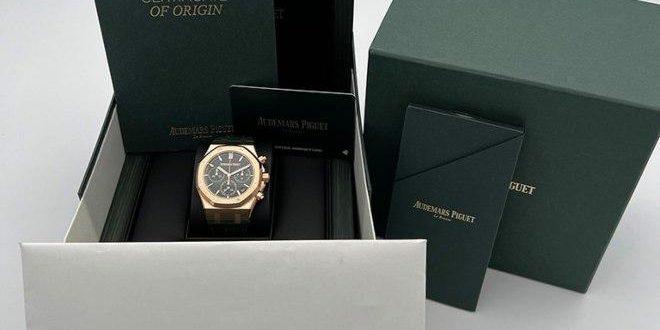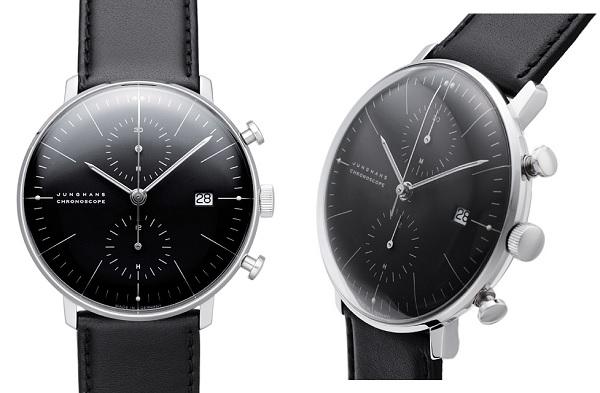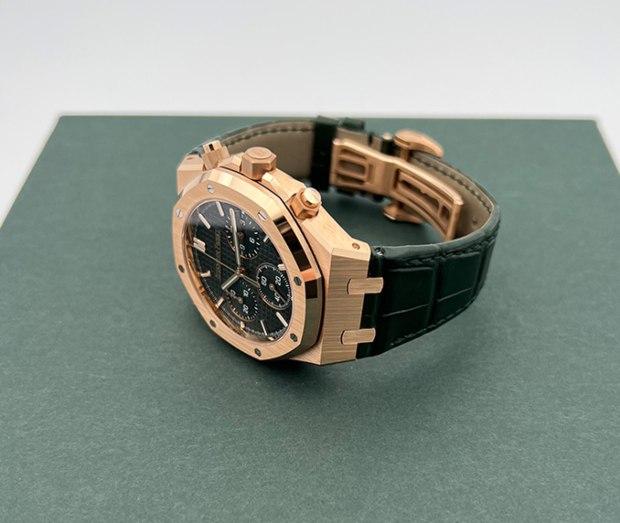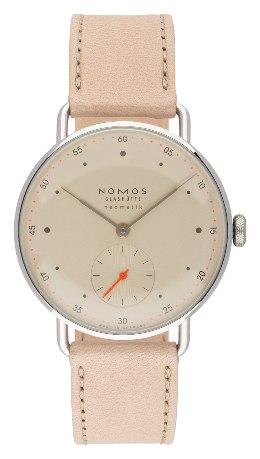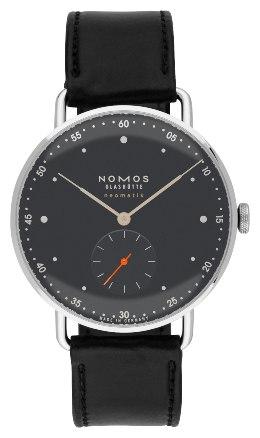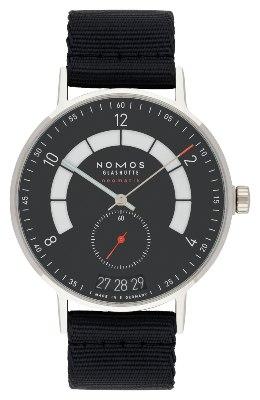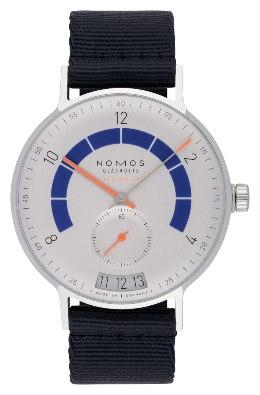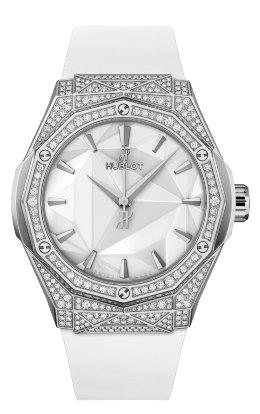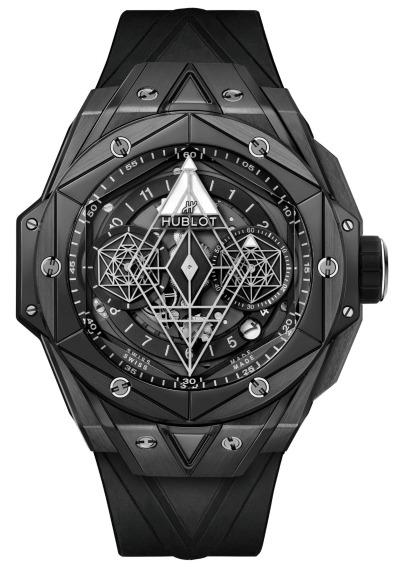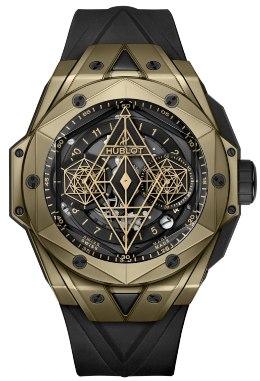« These watches are from design icons »
Gérald Genta, Max Bill, Richard Orlinski: the most famous watch designers of all time are inextricably linked with their masterpieces, some of which have been causing excitement on our wrists for decades. Other design watches come from the pens of talents who are rather unknown outside the watch world. We take a look behind the facades of six of the most prominent creations of our time and illuminate the minds behind their success.
Junghans Max Bill
Bauhaus in its purest form: when Swiss architect, painter and sculptor Max Bill was commissioned by Junghans in the mid-1950s to design a kitchen clock, he gave top priority to perfect legibility and created a dial whose sober and simple design remains legendary to this day. In 1961, the corresponding wristwatch followed, immediately adopting the succinct name of its creator and becoming the German watch legend par excellence: for over 60 years, the Junghans Max Bill has been a best-seller and today’s collection holds more design watches than ever before. Whether men or women, quartz or automatic, chronograph or radio-controlled watch: the purist icon from the Black Forest draws old and young into its wake and is the ultimate flagship of the traditional brand. One of our absolute favorites is the Max Bill Chronoscope with black dial (Ref. 027/4601.02), which discreetly packs its stop function and has an extremely noble aesthetic in its dark design. The latter is further enhanced by the domed case and crystal shape, which makes each Max Bill stand out from the crowd.
Audemars Piguet Royal Oak
Stainless steel watches in the luxury segment? Unthinkable before the introduction of the Audemars Piguet Royal Oak in 1972. The iconic design watch was created by Swiss Gérald Genta, a freelance designer in 1970, who was commissioned by Audemars Piguet to create an entirely new waterproof sports watch. Within 24 hours, Genta delivers the revolutionary result: never before had design watches had an octagonal bezel with visible screws and nestled on the wrist with an integrated bracelet. Initially, success was limited because, despite its steel case, the designer watch was more expensive than many a gold watch of the 1970s. But in the decades that followed, the Royal Oak became the most successful high-end sports watch of all time, was given a beefy sister model in the form of the Royal Oak Offshore, and became the aesthetic model for countless other designer watches. For example, for the Patek Philippe Nautilus, introduced in 1976, which Gérald Genta is said to have drawn on a napkin in less than five minutes.
Nomos Glashütte Metro
German Design Award, Red Dot, Good Design: Within a short time of its unveiling in 2014, the Nomos Glashütte Metro clears some of the most important design prizes in our country. Dubbed a “classic of the future” by the manufacturer, the timeless piece owes its success to Berlin-based Mark Braun. He has been a professor at the Hochschule für Bildende Künste Saar since 2015 and can look back on numerous collaborations with renowned brands – from Viennese crystal glass manufacturer Lobmeyr to furniture manufacturers such as Hartô or E15. With the Metro, Mark Braun has created a design watch that stands out expressively from the rest of the Nomos range. Not only the fine knurled pattern on the crown and the applied lugs, but also the literally “spot-on” dial gives the design watches a modern yet classically elegant character. In the meantime, the collection has grown to over ten variants, ranging from the classic to the luxury model in 18-karat rose gold. Whether you prefer the designer watch with a hand-wound or automatic movement is a matter of taste.
Nomos Glashütte Autobahn
Werner Aisslinger is not only one of the most important designers of our time, but also a self-confessed lover of high speeds. The fact that the internationally recognized artist likes things to be fast and sporty is reflected in the name and appearance of the Nomos Glashütte Autobahn: while the centrally positioned, concise luminous ring is reminiscent of the aesthetics of a tachometer, the curved edge of the dial marks a reminiscence of the north curve of the Berlin Avus for Aisslinger. Paired with the wide date window at six o’clock and the clear typography, the overall look of the design watches conveys pure sportiness while maintaining the simplicity typical of Nomos. What looks harmless during the day comes to life spectacularly in the dark thanks to the expansive luminous material. Just as the German autobahns with their boundless freedom mark an international peculiarity, the Nomos Glashütte is unique in the watch world. No doubt about it: this designer watch by Werner Aisslinger will continue on its successful course for many years to come.
Hublot Classic Fusion Orlinski Titanium White Alternative Pave 40 mm
What does a wristwatch from the pen of an internationally renowned sculptor and pop artist look like? Hublot provides the answer with the Classic Fusion Orlinski Titanium White Alternative Pave 40 mm (Ref. 550.NS.2200.RW.1604.ORL20): Like Frenchman Richard Orlinski’s famous animal figures, his watch captivates us with angular geometry and looks like a giant cut diamond. This is not a far-fetched association: the titanium case is set with 210 brilliant-cut diamonds, the bezel with an additional 54 of the precious gems. The bottom line is around 1.6 carats, which surround a comparatively simple dial in polished white. The same timelessness is adopted by the white rubber strap, so that the entire focus of the viewer is on the sculpture of watch case that Orlinski brings to the wrist with this design watch. Somewhere between vintage and neo-futurism, the aesthetics of these ticking works of art appeal above all to owners who do not want to disguise their wristwatch in permanent restraint.
Hublot Big Bang Sang Bleu II
The same applies to the design watches of the Hublot Big Band Sang Bleu II line (Ref. 418.CX.1107.RX.MXM22), which perform the geometric game even more brawny and imposing. The designer this time is not Orlinski, but Swiss tattoo artist Maxime Plescia-Büchi, whose London tattoo studio Sang Bleu served as the namesake for the limited edition collection. Made of black ceramic, the model shown here has a mysterious, almost intimidating effect on the viewer and features pure futurism in the dial. After identifying the hands, glimpses of the automatic HUB1240 UNICO movement with 72-hour power reserve open up. Coupled with gigantic 45 millimeters in diameter, its aesthetic details make the Hublot Big Bang Sang Bleu II the eye-catcher par excellence and should be of extremely limited interest to watch lovers with a sense of restraint. Nevertheless, the bolide is a monument in the universe of design watches and shows what an enrichment prominent artists can be for the watch world.
 Uhrinstinkt Magazine
Uhrinstinkt Magazine
